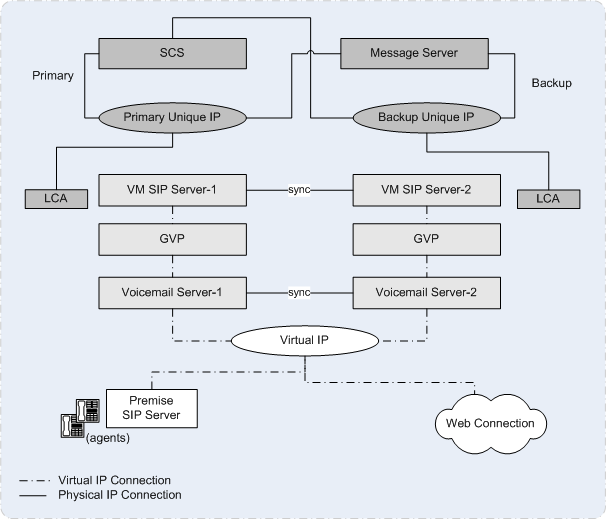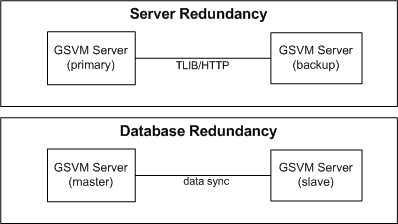HA Scenarios Overview
Genesys SIP Voicemail (GSVM) can be deployed as a highly-available (HA) pair of voicemail servers, providing redundancy for the communication paths between the server components, as well as for the database information associated with the voicemail messages themselves.
Overview
GSVM supports two HA scenarios: Traditional HA and Solution HA.
Traditional HA
In this scenario, all the GSVM components are configured in a HA pair. The failure of either the VM server or VM SIP server collocated on the primary host will result in a coordinated switchover of the VM Server and VM SIP Server in the backup host. The switchover for GVP components is defined by the individual HA deployment modes of GVP and Premise SIP Server.
Key Points About Traditonal HA
- Primary and backup VM Servers are deployed collocated with the VM SIP Server.
- RM and MCP are deployed in a standard HA configuration as supported and described in Genesys Voice Platform documentation.
- MCP instances should be configured to place their recordings in a shared directory where the VM Server can access them.
Solution HA
In this scenario, the failure of a single component results in a coordinated switchover of the entire solution from primary to backup server. This approach provides a more robust synchronization -- useful, for example, for Reporting purposes.
IP Interface Architecture
The following diagram shows the connections between Genesys components and the Voicemail host.
Redundancy Types
GSVM in an HA deployment supports redundancy for both server traffic and for database information related to the voicemail messages themselves.
| Server Redundancy For Solution HA, GSVM Server is deployed in a primary-backup HA configuration. If the primary GSVM Server instance becomes unavailable, the backup instance takes over. This provides continuity for GSVM Server functionality in the call flow.
|


